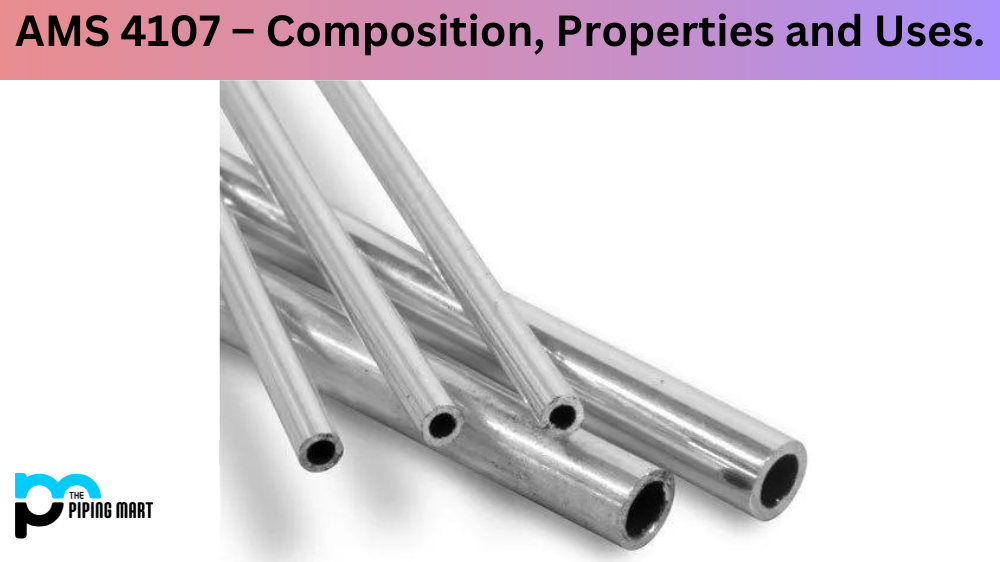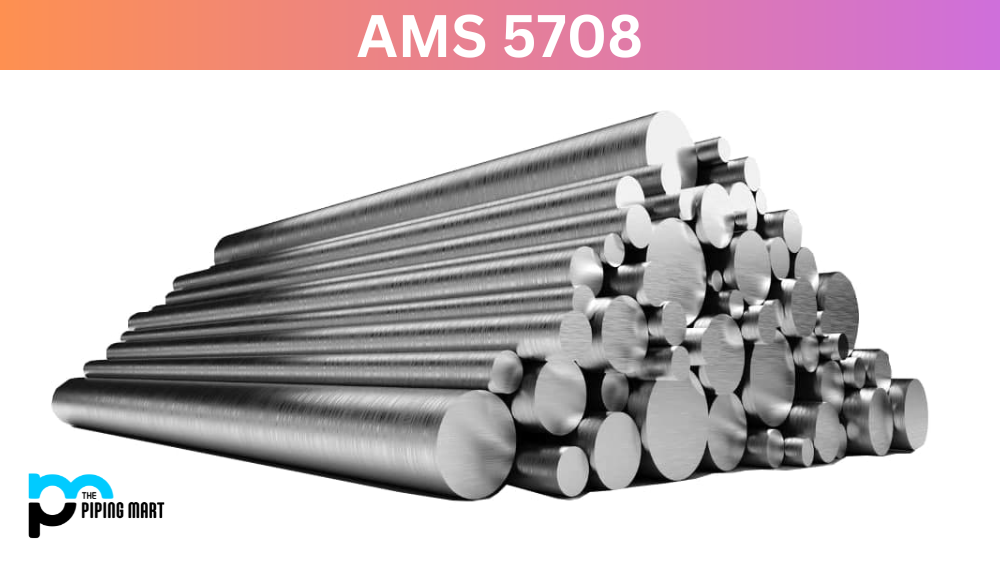When it comes to metal alloys, AMS4107 is a common name that can be heard in the manufacturing and aerospace industries. This highly sought-after alloy is a mixture of various metals with different properties, making it an excellent material for aircraft components. In this blog post, we’ll explore everything there is to know about AMS 4107, including its composition, physical and mechanical properties, uses, and heat treatment.
What is AMS 4107?
AMS 4107 (also known as 7050 Aluminum Alloy) is a specification that outlines the material requirements for aluminium alloy forgings. It ensures consistent quality and performance of forgings used in aerospace applications. With the increasing demand for lightweight and durable materials in the aerospace industry, AMS4107 is critical in maintaining safety standards for aircraft components. This specification covers a range of mechanical properties, including tensile strength, yield strength, elongation, and chemical composition requirements. By adhering to these standards, manufacturers can produce high-quality forgings that meet the rigorous demands of the aerospace industry.
What form is AMS 4039 Available at Piping Mart?
- Pipes
- Tubing
AMS 4107 Composition
Firstly, let us understand what AMS4107 is. It is a nickel-bronze alloy that comprises copper, iron, aluminium, and nickel. The presence of nickel makes it highly resistant to corrosion and provides excellent strength. The alloy also possesses high thermal conductivity and is highly ductile, making it ideal for parts that absorb shocks and resist high-stress environments. It is used widely in aerospace and marine industries due to its high resistance to marine environments.
| Element | Content (%) |
|---|---|
| Aluminum, Al | 89 |
| Copper, Cu | 2.3 |
| Magnesium, Mg | 2.3 |
| Zinc, Zn | 6.2 |
| Zirconium, Zr | 0.12 |
AMS 4107 Physical Properties
Secondly, the physical properties of AMS 4107 are worth discussing. It has a specific gravity of 8.13, and the elastic modulus ranges between 18,000 and 22,000 ksi at room temperature. The melting point is 2105°F (1155°C), and it can quickly adapt to different shapes due to its high ductility. Furthermore, the coefficient of thermal expansion (CTE) is between 9.30 and 9.80 µin/in-°F, which makes it undergo minimal deformation at high temperatures.
| Properties | Metric | Imperial |
|---|---|---|
| Density | 2.6-2.8 g/cm3 | 0.0939-0.101 lb/in3 |
| Melting point | 494°C | 920°F |
AMS 4107 Mechanical Properties
Thirdly, the mechanical properties of AMS 4107 are noteworthy. It has a minimum tensile strength of 95,000 psi and a minimum yield strength of 60,000 psi. It is classified as an alpha-beta alloy, which gives it an excellent combination of toughness and strength. Moreover, the alloy undergoes minimal creep even under elevated temperatures, making it an ideal material for high-temperature applications. It has high fatigue resistance and is also non-magnetic, making it suitable for electrical applications.
| Properties | Metric | Imperial |
|---|---|---|
| Tensile strength | 515 MPa | 74695 psi |
| Yield strength | 455 MPa | 65992 psi |
| Fatigue strength | 240 MPa | 34809 psi |
| Elastic modulus | 70-80 GPa | 10153-11603 ksi |
| Poisson’s ratio | 0.33 | 0.33 |
| Elongation | 11% | 11% |
AMS 4107 Equivalents
- AMS 4108
- AMS 4201
- ASTM B247
- ASTM B316
- QQ A-430
AMS 4107 Uses
Fourthly, let’s explore the uses of AMS 4107. It is commonly used in the aerospace industry for building engine cowlings, helicopter rotors, and aircraft parts. The alloy is also used in seawater applications such as marine fittings, pump impellers, and ship propellers. It’s high strength and resistance to corrosion make it an ideal component for building offshore oil drilling rigs due to the highly corrosive and high-pressure environments.
AMS 4107 Heat Treatment
Lastly, heat treatment is an essential process for any metal alloy that requires a particular set of properties. AMS 4107 alloy is heat treatable by annealing, which involves heating the material to a specific temperature and then cooling it down. It is an effective way to increase the alloy’s ductility and toughness. The alloy also responds well to quenching and tempering to increase strength and hardness.
Conclusion:
In conclusion, from its composition to its physical and mechanical properties, uses and heat treatment, the AMS 4107 alloy is an excellent material in various industries. Its high resistance to corrosion, ductility, and excellent strength makes it a popular choice in the aerospace and marine industries. Proper heat treatment further enhances its properties, making it an ideal material for high-performance components.

A passionate metal industry expert and blogger. With over 5 years of experience in the field, Palak brings a wealth of knowledge and insight to her writing. Whether discussing the latest trends in the metal industry or sharing tips, she is dedicated to helping others succeed in the metal industry.




